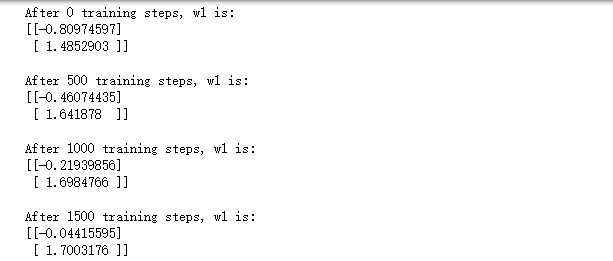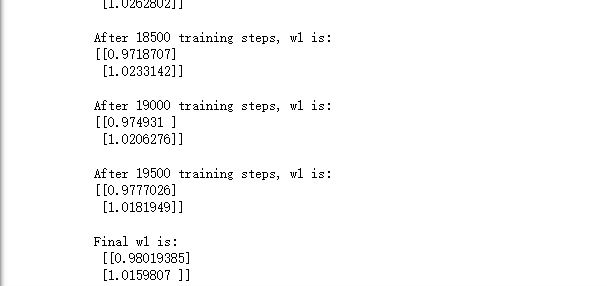TensorFlow 卷积神经网络之使用训练好的模型识别猫狗图片
#coding=utf-8
import tensorflow as tf
from PIL import Image
import matplotlib.pyplot as plt
import input_data
import numpy as np
import model
import os
#从指定目录中选取一张图片
def get_one_image(train):
files = os.listdir(train)
n = len(files)
ind = np.random.randint(0,n)
img_dir = os.path.join(train,files[ind])
image = Image.open(img_dir)
plt.imshow(image)
plt.show()
image = image.resize([208, 208])
image = np.array(image)
return image
def evaluate_one_image():
#存放的是我从百度下载的猫狗图片路径
train = '/Users/yangyibo/GitWork/pythonLean/AI/猫狗识别/testImg/'
image_array = get_one_image(train)
with tf.Graph().as_default():
BATCH_SIZE = 1 # 因为只读取一副图片 所以batch 设置为1
N_CLASSES = 2 # 2个输出神经元,[1,0] 或者 [0,1]猫和狗的概率
# 转化图片格式
image = tf.cast(image_array, tf.float32)
# 图片标准化
image = tf.image.per_image_standardization(image)
# 图片原来是三维的 [208, 208, 3] 重新定义图片形状 改为一个4D 四维的 tensor
image = tf.reshape(image, [1, 208, 208, 3])
logit = model.inference(image, BATCH_SIZE, N_CLASSES)
# 因为 inference 的返回没有用激活函数,所以在这里对结果用softmax 激活
logit = tf.nn.softmax(logit)
# 用最原始的输入数据的方式向模型输入数据 placeholder
x = tf.placeholder(tf.float32, shape=[208, 208, 3])
# 我门存放模型的路径
logs_train_dir = '/Users/yangyibo/GitWork/pythonLean/AI/猫狗识别/saveNet/'
# 定义saver
saver = tf.train.Saver()
with tf.Session() as sess:
print("从指定的路径中加载模型。。。。")
# 将模型加载到sess 中
ckpt = tf.train.get_checkpoint_state(logs_train_dir)
if ckpt and ckpt.model_checkpoint_path:
global_step = ckpt.model_checkpoint_path.split('/')[-1].split('-')[-1]
saver.restore(sess, ckpt.model_checkpoint_path)
print('模型加载成功, 训练的步数为 %s' % global_step)
else:
print('模型加载失败,,,文件没有找到')
# 将图片输入到模型计算
prediction = sess.run(logit, feed_dict={x: image_array})
# 获取输出结果中最大概率的索引
max_index = np.argmax(prediction)
if max_index==0:
print('猫的概率 %.6f' %prediction[:, 0])
else:
print('狗的概率 %.6f' %prediction[:, 1])
# 测试
evaluate_one_image()
二、损失函数
import tensorflow as tf
import numpy as np
BATCH_SIZE = 8
SEED = 23455
rdm = np.random.RandomState(SEED)
X = rdm.rand(32,2)
Y_ = [[x1+x2+(rdm.rand()/10.0-0.05)] for (x1, x2) in X]
x = tf.placeholder(tf.float32, shape=(None, 2))
y_ = tf.placeholder(tf.float32, shape=(None, 1))
w1 = tf.Variable(tf.random_normal([2, 1], stddev=1, seed=1))
y = tf.matmul(x, w1)
loss_mse = tf.reduce_mean(tf.square(y_ - y))
train_step = tf.train.GradientDescentOptimizer(0.001).minimize(loss_mse)
with tf.Session() as sess:
init_op = tf.global_variables_initializer()
sess.run(init_op)
STEPS = 20000
for i in range(STEPS):
start = (i*BATCH_SIZE) % 32
end = (i*BATCH_SIZE) %32 + BATCH_SIZE
sess.run(train_step, feed_dict={x: X[start:end], y_: Y_[start:end]})
if i % 500 == 0:
print("After %d training steps, w1 is: " % (i))
print(sess.run(w1), '
')
print("Final w1 is:
", sess.run(w1))

